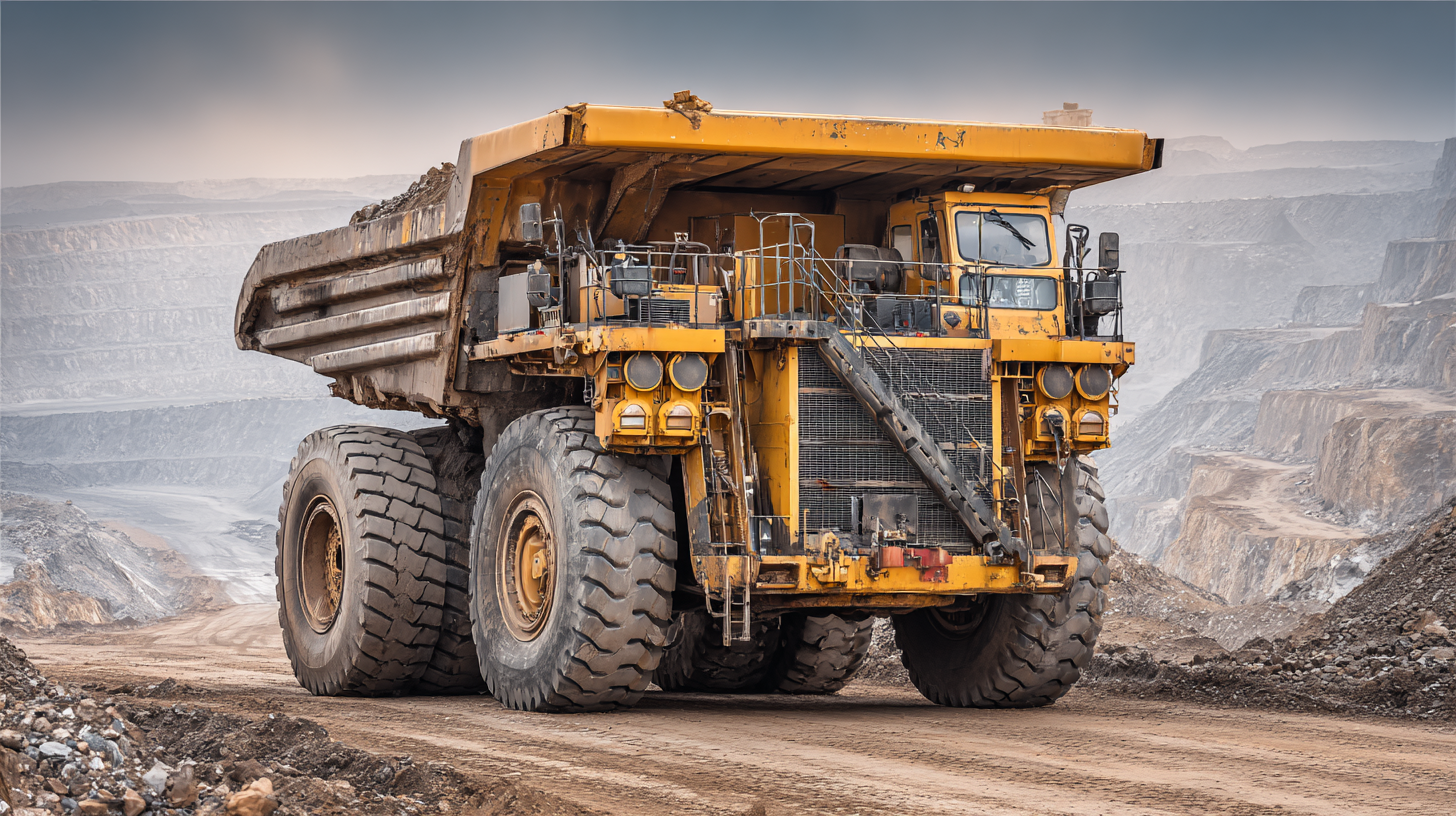In the rapidly evolving world of mining, the efficiency of operations hinges significantly on the deployment of advanced machinery, particularly the Massive Mining Truck. According to a recent report by the International Council on Mining and Metals, the global demand for minerals is projected to grow by over 60% by 2030, necessitating the adoption of more efficient mining practices. Among the largest contributors to operational efficiency are Massive Mining Trucks, which can enhance productivity by transporting up to 400 tons of material per load. However, the challenge lies in optimizing their operations, from maintenance schedules to fuel consumption. This blog delves into essential insights and solutions for maximizing efficiency within Massive Mining Truck operations, ensuring that mining companies not only meet rising demands but also improve their environmental footprint.

Understanding the key specifications of massive mining trucks is crucial for maximizing their operational efficiency. High capacity trucks, for example, offer significant advantages over traditional vehicles in terms of cost-effectiveness and revenue generation. By assessing the performance of these trucks, operators can choose the most economically viable options for their specific mining operations. Factors such as payload capacity, fuel efficiency, and maintenance costs play a critical role in this decision-making process.
**Tip 1:** When selecting a truck for your operations, consider the total cost of ownership, which includes initial purchase price, ongoing maintenance, and fuel consumption. This comprehensive evaluation will help in making an informed decision that contributes to overall efficiency.
The current trends highlight a shift towards electric drive mining trucks, projected to grow significantly in the coming years. The electric models not only promise reduced emissions but also lower operational costs. This transformation in mining technology underscores the importance of remaining adaptable to innovations that can enhance productivity and reduce environmental impact.
**Tip 2:** Stay up-to-date with emerging technologies and market trends to ensure that your fleet remains competitive. Regularly reviewing and upgrading your equipment can lead to substantial long-term savings and increased operational efficiency.
| Truck Model | Load Capacity (tons) | Engine Power (HP) | Fuel Efficiency (L/100km) | Max Speed (km/h) | Operational Cost per Hour ($) |
|---|---|---|---|---|---|
| Model A | 400 | 2000 | 50 | 60 | 150 |
| Model B | 600 | 2500 | 60 | 65 | 180 |
| Model C | 700 | 3000 | 55 | 70 | 210 |
| Model D | 800 | 3500 | 45 | 75 | 250 |
Maintenance schedules play a crucial role in enhancing the uptime and longevity of massive mining trucks, which are vital to efficient mining operations. According to a report by the International Council on Mining and Metals (ICMM), unplanned equipment downtime can lead to productivity losses of up to 20% in mining operations. By implementing a rigorous maintenance schedule, mining companies can significantly reduce these instances, ensuring that trucks are operational when they're needed most.
Regular maintenance practices not only minimize unplanned failures but also extend the overall life of the equipment. A study conducted by the Mining Equipment Manufacturers Association (MEMA) found that effective maintenance can increase the lifespan of mining trucks by over 30%. This is especially important given the high initial capital investment in these vehicles, which can exceed several million dollars each. Investing in scheduled maintenance routines allows companies to optimize their operational efficiency and reduce the total cost of ownership in the long term.
Furthermore, data from a 2022 report by Deloitte indicates that companies with well-structured maintenance schedules can see up to a 10% increase in fuel efficiency. Given that fuel often represents a significant portion of the operating costs, this improvement can lead to substantial savings. By prioritizing maintenance, mining operators not only enhance truck uptime but also contribute to more sustainable and cost-effective mining practices.
In the world of massive mining truck operations, fuel consumption stands out as a critical factor that significantly influences both operational costs and environmental impact. With the increasing pressures of sustainability and cost efficiency, mining companies must adopt innovative strategies to minimize fuel usage. One effective approach is optimizing routing and loading practices, ensuring that trucks operate at maximum capacity while minimizing unnecessary travel. Advanced GPS and route-planning technologies can drastically reduce fuel consumption by identifying the most efficient paths and avoiding overcrowded areas.

Additionally, investing in fuel-efficient technologies and alternative energy sources can lead to significant cost savings and lower emissions. Embracing hybrid and electric truck options, where feasible, allows mining operations to gradually transition to greener alternatives. Regular maintenance of equipment is also crucial; ensuring that trucks are in optimal working condition can prevent excessive fuel usage. Implementing driver training programs focused on eco-friendly driving practices further enhances fuel efficiency by encouraging smoother acceleration and deceleration, ultimately reducing the carbon footprint of mining operations.
Maximizing efficiency in massive mining truck operations is crucial for balancing load management and operational safety standards. As the industry evolves, it's essential to embrace advanced technologies and data-driven strategies that enhance performance. According to recent market analyses, the cloud workload protection platform market is set to grow significantly, highlighting the need for robust solutions that can offer compliance management and threat detection vital for mining operations.
To optimize load management, companies should integrate automated load monitoring systems that adjust in real-time to fluctuating conditions. This not only improves the efficiency of operations but also ensures that safety standards are maintained. For instance, leveraging advanced analytics platforms can enable mining operations to predict and mitigate risk factors associated with load management.
**Tip 1:** Implement IoT sensors to gather data on truck loads and terrain conditions, allowing for better load distribution and minimizing vehicle wear and tear.
**Tip 2:** Regularly review operational data to identify patterns and inefficiencies, which can inform adjustments in load management strategies, ensuring compliance with safety regulations while maximizing output.
By focusing on these areas, mining operations can achieve a remarkable balance between efficiency and safety, paving the way for future advancements in the industry.

The advent of automation in massive mining truck operations has revolutionized the industry, significantly boosting performance and efficiency. A report from the International Council on Mining and Metals (ICMM) highlights that the implementation of autonomous mining trucks can increase productivity by 20-25%. This improvement is largely attributable to the trucks’ ability to operate continuously without the need for breaks, greatly enhancing operational throughput.
Moreover, automation not only optimizes productivity but also contributes to safety enhancements in mining operations. According to a study by Allied Market Research, automated trucks reduce the rate of accidents by up to 30%, as they minimize human errors that often lead to hazardous situations. Additionally, the integration of advanced technologies such as GPS and AI in these vehicles allows for real-time monitoring and predictive maintenance, resulting in reduced downtime and lower operational costs. As the industry continues to embrace these technological advancements, the transformative impact of automation on massive truck operations becomes increasingly evident.